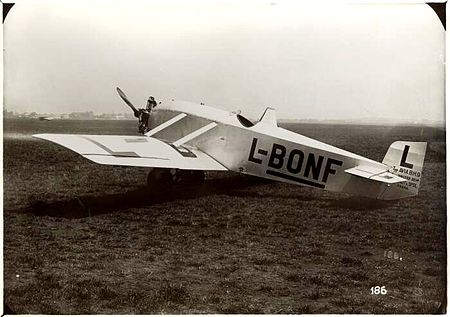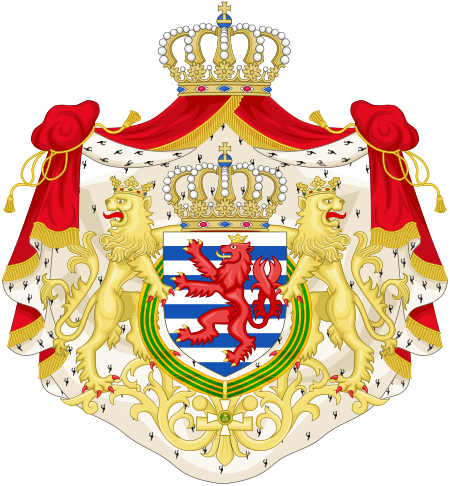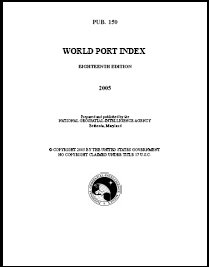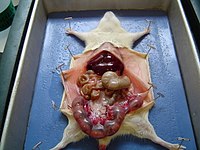Disección
|
Read other articles:

BH-9 Role Sports planeType of aircraft Manufacturer Avia Designer Pavel Beneš and Miroslav Hajn First flight 25 November 1923 Introduction 1923 Number built 11 The Avia BH-9 was a twin-seat sports plane built in Czechoslovakia in 1923, based on the BH-5. As with other developments in the BH-1 lineage, the BH-9 was a low-wing braced monoplane that accommodated the pilot and passenger in tandem, open cockpits. The BH-9's structure was strengthened to allow the use of a higher-power engine than in…

تعداد الولايات المتحدة 1990 المعلومات البلد الولايات المتحدة الموقع الولايات المتحدة الهيئة مكتب تعداد الولايات المتحدة التاريخ 1 أبريل 1990 تعداد الولايات المتحدة 1980 تعداد الولايات المتحدة 2000 تعديل مصدري - تعديل تعداد الولايات المتحدة 1990 كان التعداد ا�…

A questa voce o sezione va aggiunto il template sinottico {{Competizione cestistica nazionale}} Puoi aggiungere e riempire il template secondo le istruzioni e poi rimuovere questo avviso. Se non sei in grado di riempirlo in buona parte, non fare nulla; non inserire template vuoti. Squadra Pt G V P % 1. Sheffield Sharks 66 40 33 7 0.825 2. Brighton Bears 60 40 30 10 0.750 3. Chester Jets 56 40 28 12 0.700 4. Thames V. Tigers 52 40 26 14 0.650 5. N…

В Википедии есть статьи о других людях с такой фамилией, см. Савинков. Борис Викторович Савинков Дата рождения 19 (31) января 1879 или 31 января 1879(1879-01-31)[1] Место рождения Харьков, Российская империя[2] Дата смерти 7 мая 1925(1925-05-07)[2][3][…] (46 лет) Место смерти �…

اقتصاد اجتماعيجزء من اقتصاد بدعي تعديل - تعديل مصدري - تعديل ويكي بيانات جزء من سلسلة مقالات حولعلم الاجتماع تاريخ فهرس المواضيع الرئيسية مجتمع عولمة سلوك الإنسان تأثير الإنسان على البيئة هوية الثورات الصناعية 3 / 4 / 5 تعقيد اجتماعي بنائية اجتماعية الثقافة البيئية مساواة اجت�…

У этого термина существуют и другие значения, см. Колумбия (значения). Колумбияангл. Mount Columbia Высшая точка Абсолютная высота3741[1] м Относительная высота2361 м Первое восхождение1902 год Расположение 52°08′50″ с. ш. 117°26′10″ з. д.HGЯO Страна Канада Провин�…

2012 novel by Philippa Gregory The Kingmaker's Daughter First UK edition coverAuthorPhilippa GregoryAudio read byBianca AmatoCountryUnited KingdomLanguageEnglishSeriesThe Cousins' WarGenreHistorical fictionPublisherSimon & SchusterPublication date16 August 2012Media type Print (hardcover/paperback) Audiobook E-book Pages448ISBN978-0-85720-746-3Preceded byThe Red Queen (Gregory novel) Followed byThe White Princess The Kingmaker's Daughter is a 2012 historic…

Unincorporated community in Washington, United StatesGlenrose, WashingtonUnincorporated communityGlenrose, WashingtonCoordinates: 47°37′41″N 117°20′05″W / 47.62806°N 117.33472°W / 47.62806; -117.33472CountryUnited StatesStateWashingtonCountySpokaneElevation2,240 ft (680 m)Time zoneUTC-8 (Pacific (PST)) • Summer (DST)UTC-7 (PDT)ZIP code99223Area code509GNIS feature ID1510993[1] Glenrose is an unincorporated community in Spokane Cou…

State with a grand duke or duchess as head of state Grand Duchy redirects here. For the American rock band, see Grand Duchy (band). This article needs additional citations for verification. Please help improve this article by adding citations to reliable sources. Unsourced material may be challenged and removed.Find sources: Grand duchy – news · newspapers · books · scholar · JSTOR (July 2023) (Learn how and when to remove this message) Coronation of Cosi…

Maxime Bôchersekitar tahun 1900Lahir(1867-08-28)28 Agustus 1867Boston, MassachusettsMeninggal12 September 1918(1918-09-12) (umur 51)Cambridge, MassachusettsKebangsaanAmerika SerikatAlmamaterUniversitas HarvardUniversitas GöttingenDikenal atasPersamaan diferensial, deret, dan aljabarKarier ilmiahBidangMatematikaInstitusiUniversitas HarvardPembimbing doktoralFelix KleinMahasiswa doktoralWilliam BrenkeDavid R. CurtissGriffith C. EvansLester R. FordWalter B. FordJames W. GloverCharles N. Moor…

Tapiz de la Creación del Museo capitular de la catedral de Gerona, bordado con la técnica de la pintura a la aguja. La pintura a la aguja (Acu pictae) es como se llama el bordado realizado a partir de la Edad Media en punto de cordoncillo, para llenar o reseguir la silueta de los dibujos de un bordado hasta cubrir completamente el tejido-base, con el que quedaba el efecto como si fuera un tapiz, se conoce también por el nombre de «punto de figura» y se realizaba con hilos de lana o seda sob…

Solar installation, Fort Bragg Solar power has been increasing rapidly in the U.S. state of North Carolina, from less than 1 MW (megawatts) in 2007 to 6,152 MW in 2019, when it had the second-largest installed PV capacity of all states.[1] In addition to federal incentives, the state has a Renewable Portfolio Standard of 12.5% by 2021 and a state renewable energy tax credit, both of which have been credited with boosting solar installations.[2][3][4] A 2018 Smiths…

يفتقر محتوى هذه المقالة إلى الاستشهاد بمصادر. فضلاً، ساهم في تطوير هذه المقالة من خلال إضافة مصادر موثوق بها. أي معلومات غير موثقة يمكن التشكيك بها وإزالتها. (يناير 2022) هذه المقالة يتيمة إذ تصل إليها مقالات أخرى قليلة جدًا. فضلًا، ساعد بإضافة وصلة إليها في مقالات متعلقة بها. (ي…

For other Pennsylvania townships with similar names, see Foster Township, Pennsylvania (disambiguation). Township in Pennsylvania, United StatesFoster Township, Luzerne County, PennsylvaniaTownshipEckley Miners' Village in Foster TownshipMap of Luzerne County highlighting Foster TownshipMap of Pennsylvania highlighting Luzerne CountyCountryUnited StatesStatePennsylvaniaCountyLuzerneSettled1824Incorporated1855Area[1] • Total45.14 sq mi (116.92 km2) • …

The front cover of the World Port Index, published by the National Geospatial-Intelligence Agency The World Port Index (PUB 150) contains a tabular listing of thousands of ports throughout the world, describing their location, characteristics, known facilities, and available services. Of particular interest are the applicable volume of Sailing Directions and the number of the harbor chart. The table is arranged geographically, with an alphabetical index. The selection of these places is based on…

.كنيسة مارمرقس القبطية، تعد الكنيسة القبطية الأرثوذكسية إحدى أكبر التجمعّات المسيحية في العالم الإسلامي. تترواح أعداد المسيحيين في العالم الإسلامي بين 139-144 مليون حسب جدول مركز بيو للأبحاث؛ وبين 153 مليون إلى 230 مليون حسب إحصائيات أخرى.[1][2][3] بعيد القرن السابع بنت�…

Disambiguazione – Carducci rimanda qui. Se stai cercando altri significati, vedi Carducci (disambigua). Disambiguazione – Se stai cercando la nave militare, vedi Giosuè Carducci (cacciatorpediniere). Giosuè Carducci Senatore del Regno d'ItaliaDurata mandato13 dicembre 1890 –16 febbraio 1907 Legislaturadalla XVII (nomina 4 dicembre 1890) Tipo nominaCategorie: 19, 20 Sito istituzionale Deputato del Regno d'ItaliaDurata mandato19 novembre 1876 –12 marzo…

City in Derbyshire, England This article is about the city in England. For other uses, see Derby (disambiguation). City and unitary authority in EnglandDerbyCity and unitary authorityFrom left to right:Top: Victoria StreetMiddle: Sadler Gate and the Market HallBottom: Council House and All Saints' Cathedral Coat of armsMotto(s): Latin: Industria, Virtus et Fortitudo, lit. 'Energy, Power and Strength'Shown within DerbyshireCoordinates: 52°55′29″N 1°28′41″W / &…

Garrett HedlundLahirGarrett John Hedlund3 September 1984 (umur 39)Roseau, Minnesota, Amerika SerikatPekerjaanAktor, penyanyiTahun aktif2003–sekarang Garrett John Hedlund (lahir 3 September 1984) adalah aktor asal Amerika Serikat dia terkenal karena perannya di film Troy, Friday Night Lights, Four Brothers, Eragon, Country Strong, dan sebagai Sam Flynn di film Tron: Legacy. Hedlund memiliki seorang putra dengan Emma Roberts, yang lahir pada 27 Desember 2020 dan diberi nama Rhodes Robe…

Town in Veracruz, MexicoTlacotalpanTownTlacotalpan seen from the Papaloapan riverTlacotalpanShow map of VeracruzTlacotalpanShow map of MexicoCoordinates: 18°37′N 95°40′W / 18.617°N 95.667°W / 18.617; -95.667Country MexicoStateVeracruzTown status1847City status9 May 1865Elevation10 m (30 ft)Population (2010) • Total8,853Time zoneUTC-6 (Central (US Central))WebsiteMunicipio de TlacotalpanUNESCO World Heritage Site UNESCO World Heritag…









